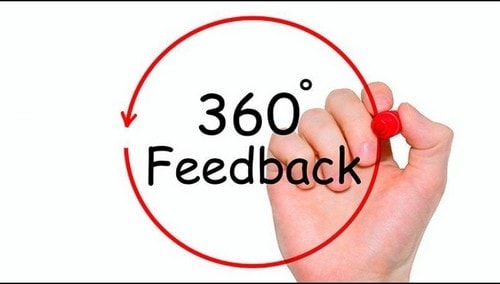At the core of a successful business is effective management of employee performance. For example, regular feedback sessions and goal setting will help ensure that your employees are working well towards achieving pre-defined objectives.
Achieving peak performance from staff requires clear objectives and sound feedback along with a culture of recognition, reward, and consistent development opportunities. This process has to be tailored to each individual, based on their skills and strengths, as well as their areas of development.
Table of Contents
What is Employee Performance?
Employee performance is the measure of how well an employee fulfills the duties and responsibilities of their job. It is a combination of a person’s behaviors, skills, abilities, and knowledge in achieving goals within the role. It gauges how an employee works, so organizations can use strategies to channel a positive work environment by sharing constructive feedback and optimizing work performance.
Work performance affects the overall quality of work within the workplace, which in turn directly influences workplace productivity. The HR department of the organization is responsible for tracking down employees’ performance so that the right decision can be taken. If the employee has been showing great performance activities, he or she can be rewarded or if the person is losing interest, more motivation can be provided.
To create a culture of performance excellence within the workplace, employers should strive to instill company values throughout the organization. Effective communication skills are paramount in this process, ensuring employees understand performance goals and expectations.
Managers should also provide regular employee feedback and guidance to help employees understand their own performance and know when they are performing well and when additional help is needed. By creating an environment where performance is rewarded and celebrated, employees will be more engaged in their roles and the quality of work produced.
Importance of Measuring Employee Performance
Why should be employee performance measured? Here are some of the potential reasons.
1) Knowing the productivity of the Employees
Often managers do get extremely busy in their daily activities and hence do not have much time in hand to talk about anything extra apart from the projects and the workload. It helps in checking an employee’s accomplishments towards organizational goals.
But it is very much important to discuss the performance of the employees so that it can be known how the employees are performing and if they are performing low, what is the possible reason behind it.
This is the reason, several organizations maintain an evaluation system either once a year or even at a time twice a year. Based on the performance review, the managers talk to the employees to discuss their performance.
2) Staff Development
With the help of work performance knowledge, it can be known which staff is performing in what way.
Based on such an evaluation, the manager can focus on the weakest employee and try different tactics and ways to boost the employee and help the person get developed and show up higher performance in the team.
3) Motivation For The Staff
How will you know which staff needs more motivation and which staff can be provided with appreciation? This is the reason, it becomes important to measure up work performance.
There will be employees who are doing great and because of them, the organization is getting high revenue from time to time. You need to appreciate such employees so that they can keep up this job.
On the other hand, some employees are not performing that well. It is important to motivate such employees through different ways such as rewards, words, and others so that they can also perform equally as your star employees.
4) Documentation Of The Performance
There are several times when you may need to decide on upgrading an employee to a senior position. But you cannot simply upgrade an employee only because the position higher to the employee has got vacant.
You need to have a proper evaluation, of whether the person will be able to handle the position well or not. If the person is capable to take care of the position, then only you should raise his responsibilities, otherwise, this can be a waste for your organization.
This cannot be known by one-time performance evaluation. It is important to have a record of the performances to check out the consistency of the employee.
5) Taking Bigger Decisions
There are times when the employer needs to take bigger and more crucial decisions such as eliminating an employee from the team.
Again this cannot be done just by one-time evaluation. It is important to check out the consistency of employee performance so that the right decision can be taken up.
What factors influence Employee Performance?
For encouraging employees to perform effectively, having such a program that pays heed to below given factors is important-
- Enhancing employee performance through training and development
- Fostering employee involvement
- Having a performance-driven company culture or work culture
- Using rewards & recognition
- Providing professional growth opportunities to learn new skills
- Having a clear understanding of the company’s objectives and expectations from the employee
- Training and upskilling strategies
- The employee’s comprehension of the products they are selling
- Task assignments should be done strategically, utilizing the skills and abilities of each employee
How to Measure Employee Performance?
For conducting an effective employee review process and measuring productivity, you can use the following methods-
1) Use a Checklist
You can use a checklist with Yes-No criteria to quickly find out the productivity and deficiencies of the employees in different performance areas.
This way you can find out the employees who required some special training and development sessions to be more effective.
2) Asking Employees to do Self Evaluation
You can also ask your employees to rate their performance on different parameters. Using a form with MCQs along with Essay Type Answers can be useful here.
Later you can compare that with your objective appraisal system to find out key things to pay attention to.
3) 360-Degree Feedback
In this technique, you can find out the details of the performance of your employee from their peers, seniors, supervisors, co-workers, and other employees with whom they work.
Then you will get the details of the areas where improvement is needed, plus also areas where the same employee is quite efficient. This way, you can take the right measures to improve employee performance.
4) MBO or Management by Objectives
In this technique, managers and employees decide objectives jointly. They finalize individual objectives, alignment of their objectives with company goals, and how the performance will get measured.
This way, employers get to know what was expected from the employee and what he or she has done finally. This can be quite helpful in gauging the alignment of employee performance with the company goals.
5) Using Graphics Rating Scales
You can use a scale that has numbers from 1 to 5 or 1 to 10 for rating the performance of an employee.
Different behavioral elements of a job profile such as ‘participating in decision making’, and ‘understanding a task’, etc can be tested with such scales.
- Self-evaluation
- Ranked performance on scales
For measuring Employee Performance, four metrics come into play and they are-
Four Metrics to Measure Employee Performance
1) Work Quality Metrics
- Management by Objectives
- Subjective Appraisal by Manager
- Product Defects
- Number of Errors
- Net Promoter Score (NPS)
- 360 Degree Feedback
- 180 Degree Feedback
- Forced Ranking or Vitality Curve
2) Work Quantity Metrics
- Number of Sales
- Number of Units Produced
- Handling Time
- First Call Resolution
- Contact Quality
3) Work Efficiency Metrics
- Individual Efficiency
- The balance between Quantity and Quality
- Overtime Hours
- Overall Labor Effectiveness
- Sales Growth
4) Organization Performance Metrics
- Revenue per Employee
- Profit per FTE
- Human Capital ROI
- Absenteeism Rate
- Overtime per Employee
So, these are some of the metrics that will help you gauge employee performance.
Now, the time has come to know the techniques that can help you improve employee performance. So, let us delve into those as well-
How to Improve Employee Performance
To learn the tips for optimizing employees performance, the first thing you should know is why employees underperform. And the reasons behind this are Inadequate Capabilities, Unclear Goals, and Uncertain Accountabilities.
So, for improving employee performance, you need to resolve these issues. Below given tips will help you optimize your employee performance management and performance review process –
1) Always let employees know your Expectations Clearly
Employee performance is best when everyone is on the same page. Employees need to know what is expected of them to perform at their best. The manager or supervisor should communicate the expectations to each employee in a clear and concise manner.
2) Have a consistent employee performance appraisal system
Performance reviews are an important part of employee performance. They allow the manager and individual employees to track progress over time and determine areas for improvement.
3) Employee Development has to be on your priority list
Employee performance is also enhanced when the manager invests in employee development. This could involve offering training opportunities, providing feedback on job performance, and helping employees to set and achieve goals.
4) Have a mechanism that can boost the employees’ morale
Rewards and recognition can also be a great way to boost morale and improve employee productivity.
6) Encourage employees and ensure employee empowerment and motivation
Employee empowerment is important for employee performance. Giving every individual employee the tools and support to take ownership of their work can help to increase engagement, motivation, and employee productivity.
7) Have Employee Engagement well in place
Employee engagement is essential for employee performance. Both the manager and each employee should strive to create a culture of engagement where employees feel valued, and respected and have the opportunity to share their ideas and opinions.
8) Use technology to communicate properly
Technology can be used to facilitate communication between managers and employees for a more efficient way of tracking performance and providing feedback in real time.
9) Do regular meetings, discussions and don’t wait for performance appraisals day to communicate
Regular meetings and discussions should be held to discuss the individual employee’s performance, job satisfaction, and areas for improvement.
10) Job Satisfaction is critical
Job satisfaction is an important part of employee performance, and managers should strive to create an environment that is conducive to job satisfaction.
Now, let us have a look at the perspective of some naysayers who talk about the downsides of employee performance measures-
Are There Any Disadvantages to measuring Job Performance Also?
The record of employee performance can offer you with so many benefits in the organization. But there are also several disadvantages that one may notice in such an evaluation.
1) Time-Consuming Method
The process of evaluation of employee performance can seem time-consuming at times. There are a lot of steps that need to be followed by the evaluation method and this may require a lot of time to be invested.
Though the performance evaluation finally offers several benefits and has a lot of importance in the organization, on the other hand, many people consider that it is highly time-consuming and also a waste of effort and other resources.
Though a major number of organizations consider it to be beneficial, some firms do not feel it is that important.
2) Discouragement
There can be several employees who are trying their best to put in their best efforts but still may fail to perform well due to some others reasons such as the wrong environment, peer pressure, and others. In such a situation, if it is shown that the employee is performing poorly, it puts on more pressure o the employee and acts as a discouragement for the employee.
Hence, it is always said that whenever an employee is confronted with poor performance, they should be motivated so that they do not feel low, but rather should boost up themselves.
However such downsides are of no significance when it comes to boosting the performance and revenues of a company because the company’s performance is directly proportional to its employee’s performance.
In Conclusion…
The method of employee performance evaluation can be a great tactic to have a proper check on the employees and their actual performance.
This not only offers you an insight into which employee is performing in what way, but also lets you know what you should do to boost the confidence of the employees so that they can perform well.
At times, knowing about the performance can also tell you about the work culture and the work environment of the office, and can take up steps to change it or improve it accordingly.
So, what do you think is the best technique for optimizing employee performance? Tell us in the comments below.
Liked this post? Check out the complete series on Human resources







